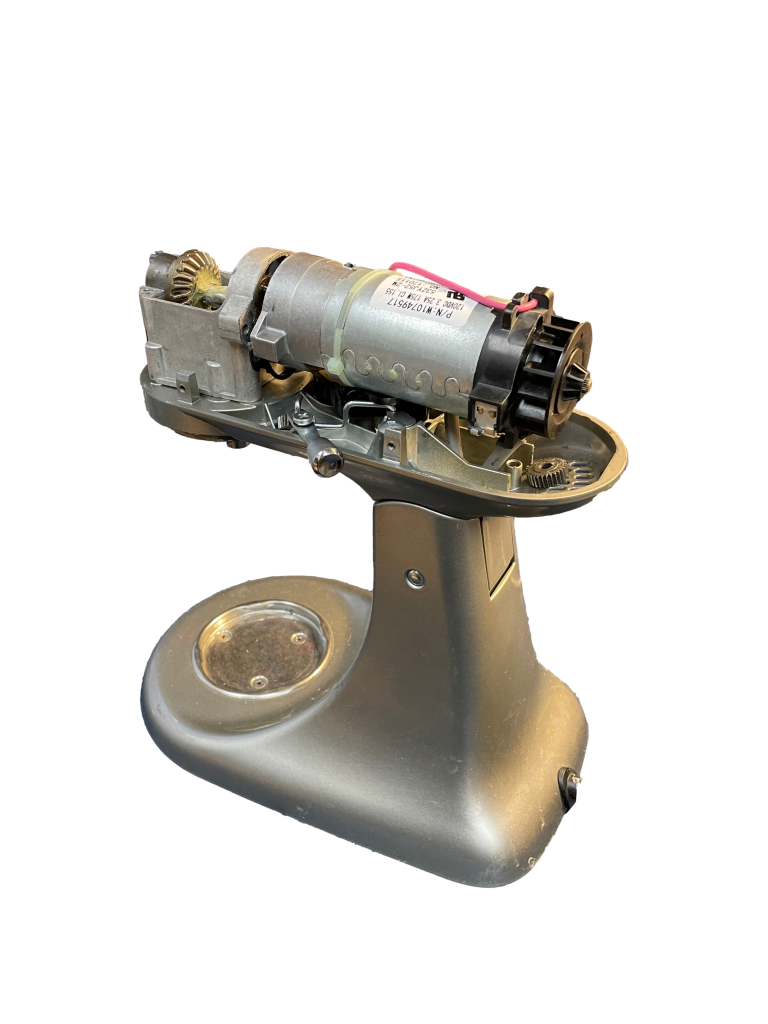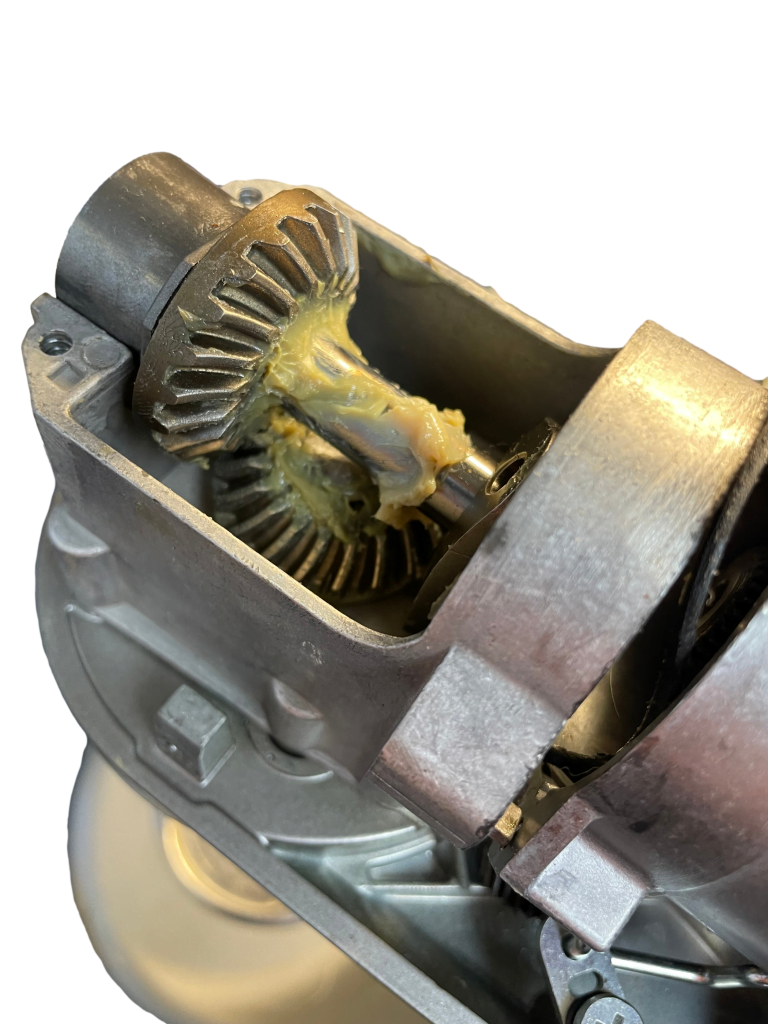KitchenAid Mixer Repair in Colorado
The KitchenAid Mixer, which has helped bakers create mouth-watering treats for decades, is now a staple in every kitchen. From traditional household kitchens to large commercial cookhouses, you would hear people praise the appliance for its functionality. However, now and then, the device tends to act up, putting your cooking on hold. When it does, and you have no way of fixing the unit, it’s best to hand it over to an experienced and certified KitchenAid Mixer repair center.
If you are looking for a KitchenAid Mixer repair center in Boulder or Arvada, Colorado, we here at Vacuums R Us would be thrilled to help you out. With nearly two decades’ worth of experience in repairing both industrial and household appliances, we are confident that we can solve any issue that your KitchenAid Mixer might have. Further, thanks to our systematic repair process, we can guarantee you that no problem will be overlooked.
We will have a quick peek at our in-house repair strategy later on in this read. But before that, we would like to dive into the importance of tune-ups and the different signs a mixer might give, suggesting the need for a repair session.
Tune-ups: When & Why do you need them?
A KitchenAid mixer, just like any machine, requires an occasional tune-up to function smoothly. Based on our experience, we suggest owners to have their device serviced at least once every two years. Mixers that are used extensively throughout the day (especially in commercial kitchens) will require over one maintenance session every 12 months to ensure the machine operates effectively for years to come.
The following are a few perks of having your mixer checked regularly:
Economical in the long run
Frequent checkups can help identify problems with your KitchenAid before they get out of hand. Issues such as damaged gears, leaky gaskets and faulty circuits can lead to expensive repairs if not treated immediately. These issues can cause irreversible damage in the long run as well.
Over the years of carrying out mixer repairs at our stores, we’ve come across many devices that required heavy repairs just because these types of troubles were not recognized sooner. They ended up costing the owners much more than they would have paid for frequent tune-up sessions.
Over time, the oil and grease lubricating the moving parts of the device dry up. This can cause excessive friction between coupled pieces which will quickly wear parts out. If left untreated, these worn parts might require replacements which can lead to a much more expensive repair.
Longer Life Span
The wear and tear of a mixer’s mechanical parts are unavoidable. However, you can control the degree to which these parts wear off with proper maintenance. Applying the correct lubricant and checking for damages frequently will keep your device healthy and help it last for many years.
Many owners might argue that these damaged parts can simply be replaced. But they do not consider the fact that these flawed pieces can disrupt the other mechanism within the unit. Therefore, it’s important to have all the components of a mixer working at optimum conditions.
But if replacement is the only option, we need to replace the required components with authorized parts. Using off-brand parts which are made of low-quality material can severely harm the machine and reduce its lifespan. That’s why our KitchenAid repair centers in Arvada and Boulder deal with only premium parts bought from the manufacturer.
Smooth Performance & Easy Repair Sessions
It goes without saying that regular maintenance leads to a mixer with smooth performance. The well tested and properly oiled parts and components will work in harmony to ensure that you won’t face any problems when cooking or baking. So, all you’ll have to do is concentrate on making the next batch of tasty treats for your family or customers.
Frequent checkups will also make future repair sessions much easier to perform. This is because it is simpler to pinpoint an issue with a serviced machine compared to one that hasn’t been maintained in ages. Thus, this makes repairing a serviced machine much faster.
Tell-Tale signs your Kitchen Aid Mixer Needs Professional Repair
KitchenAid mixers can stir up trouble after extended use. Some of these troubles are minor issues which can be fixed quickly. For example, you can fix a problem such as a beater head not clearing the bowl by adjusting the height of the beater and making sure that the bowl is firmly attached to the base. Occasionally, simple fixes might not solve the issues of your KitchenAid mixer. At times like this, you would require professional help and would be best served dropping your machine off to a professional KitchenAid repair center.
The following are a few instances that might require the aid of an expert if the given simple solutions don’t work:
KitchenAid Mixer Does Not Turn On
If your mixer doesn’t turn on, you need to first check if it’s because of a faulty plug connection. Make sure that your unit is plugged into a working outlet and that the power cord is not damaged.
Next, make sure that the MCB (Miniature Circuit Breaker) or any fuse connecting to the outlet is not disconnected. You can always plug in another device to ensure the outlet provides power.
If the mixer stops working suddenly during operation, we suggest you let the device rest for around an hour. KitchenAid mixers sometimes turn OFF automatically when you use them for extended periods of time. This prevents internal damage because of overheating. If none of the above easy fixes works, you need to contact a KitchenAid Mixer repair center.
Speed Issues
The “Speed Control Plate” of the KitchenAid Mixer governs the speed of the unit during operation. It is usually located at the back of the machine and can be accessed by removing the covers.
Any issues related to speed in the device are often associated with a problem in the “Speed Control Plate”. Most speed control plates have two spring-loaded screws that control speed. These screws often come loose because of vibration, causing the machine to speed up. Thus, if you feel there’s an issue with your unit’s speed setting, you can access the speed control plate to check whether the screws are all right.
Turning the screws to the left will speed up the device while turning them to the right will slow it down. If adjusting the screws doesn’t do the trick, you might need to replace the speed control unit.
KitchenAid Makes Loud Noises and Rattles
Constant rattling and loud noises are also quite common problems in KitchenAid mixers. One reason for rattling and noisy operation is inadequate lubrication.
As mentioned before, a mixer comprises many mechanical parts that work together. Most of these parts are connected, thus are prone to wear and tear. These lubricants dry up after some time and the moving metal parts scrape against each other, producing noise.
Apart from insufficient lubrication, constant ratting can also be caused by loosely fit components. Make sure that different parts, such as the beater and bowl, are properly fixed in place.
Occasionally, KitchenAid owners might hear a faint metallic noise coming from their unit. This is often caused by the worm gear losing a few teeth. At moments like this, you will have to opt for a replacement.
KitchenAid Mixer Not Spinning
A mixer that doesn’t spin can result from many issues. However, the most common cause is worn-out worm gear.
Worm gears absorb stress and friction when the mixer operates. They gradually wear away with use but can also break down as a safety mechanism when the device is overloaded. Thus, it acts as a buffer against excessive stress and protects the other gears within the unit. If a damaged worm gear is what’s preventing your mixer from spinning, you need professional replacement of the gear to ensure no further damage was caused.
Leaking Grease/Oil
Once in a while, a KitchenAid mixer might leak oil. It can happen when the lubricants within the unit separate and the liquid component drips out. Although not an irreversible issue, the leaking oil can find its way into your mixture. So, it is in the best interest of everyone to have the problem fixed immediately.
Age, overheating and lack of use can cause this issue. However, it can also happen because of a damaged gasket. Therefore, you would need to inspect the unit to figure out the cause. Re-applying brand new lubricant will fix any oil leaks caused because of old age or lack of use. But if it’s a damaged gasket you are dealing with, you will need a replacement.
Vacuums R Us KitchenAid Mixer Repair Process
Although some of these issues can be fixed at home, things can go south pretty quick if you don’t know what you are doing. At times like these, it’s best to consult an experienced KitchenAid mixer repair center like ours at Boulder and Arvada. With countless mixer repair sessions under our belt, we have yet to face a problem that’s left us baffled. So, we are confident in solving the issues your KitchenAid mixer might have as well.
Now that you have a pretty solid idea about the issues a mixer faces, let us have a quick look at our in-house KitchenAid mixer repair strategy.
Initial Inspection
Our team of technicians at Vacuums R Us & Sewing too are quite methodical. They prefer inspecting a unit in steps. However, they first need to analyze the current condition of the unit. For this, they run a series of tests. These tests are carried out to determine the different faults the device might have. The results are then recorded so that they can be used to gauge the improvement of the mixer once the repair process is over.
Power Analysis
Once the initial test run is over, our techs check for problems with the power cord.
Power cord issues are quite common in KitchenAid mixers used in busy kitchens. We’ve come across many units that were in working condition, yet could not start due to damaged or abused power cords. Thus, our experts pay special attention to the condition of the power cord and will suggest a replacement if it is damaged beyond repair.
During this stage, our specialists carry out a “Watt test” to determine the power drawn in by the unit as well. They run the device under different speed settings and record the power consumption. Any deviation from the recommended values that might indicate an issue with the power flow is looked into and corrected.
Motor Checkup
A flawed motor heavily disrupts the power consumption of a KitchenAid mixer. Thus, we examine it while hunting for power troubles.
To access the motor, we first need to remove the transmission cover. Once the covers are off, we carefully separate the motor, speed control unit, and the hall effect sensor using a collection of tools. The motor is then checked for problems related to the winding, brushes, leads and other connected components. We correct any issues found and suggest replacements for components that are likely to fail.
Examining The Phase Control Unit
We also analyze the phase control unit along with the motor. The phase control board regulates the speed of the machine. Thus, a fault in it can cause issues related to the speed, which severely affects the performance of the unit. We first inspect the board for damages, heat sink issues, and potential short circuits. Then we check the other components, such as the control plate, that help govern the speed of the device.
Inspecting the planetary
After our specialists finish fixing the issues with the motor and control unit, they move on to inspect the planetary of the machine.
If we consider the motor and control unit to be the heart and brain of the device, the planetary will most definitely be the arms. Even if everything else worked fine, any issue in the gear system within the planetary will render the unit useless. Thus, our techs ensure that every gear, nut, bolt and bearing is in top-notch condition.
They will replace any parts that are beyond repair and make the required adjustments to improve performance. Our experts also examine other functions, such as the “tilt-up mechanism” and “bowl lifts” during this stage.
Applying Lubricant
Once we confirm that the different mechanisms of the mixer work fine, we start the oiling process. We’ve already seen how improper lubrication can cause harm to the unit. Therefore, we re-oil all the required parts using brand new lubricant. We also remove dirt, dust, and other unwanted particles that are present. After the interior is thoroughly cleaned and oiled, we put the covers back on.
Final Test Run
In the end, we run a few tests to determine any other issues with the mixer. We run the device under different settings and examine each function for any faults that we might have overlooked.
If the test results are satisfying, we finally contact you to inform you that your KitchenAid mixer is prepped and ready to make more delicious treats.



